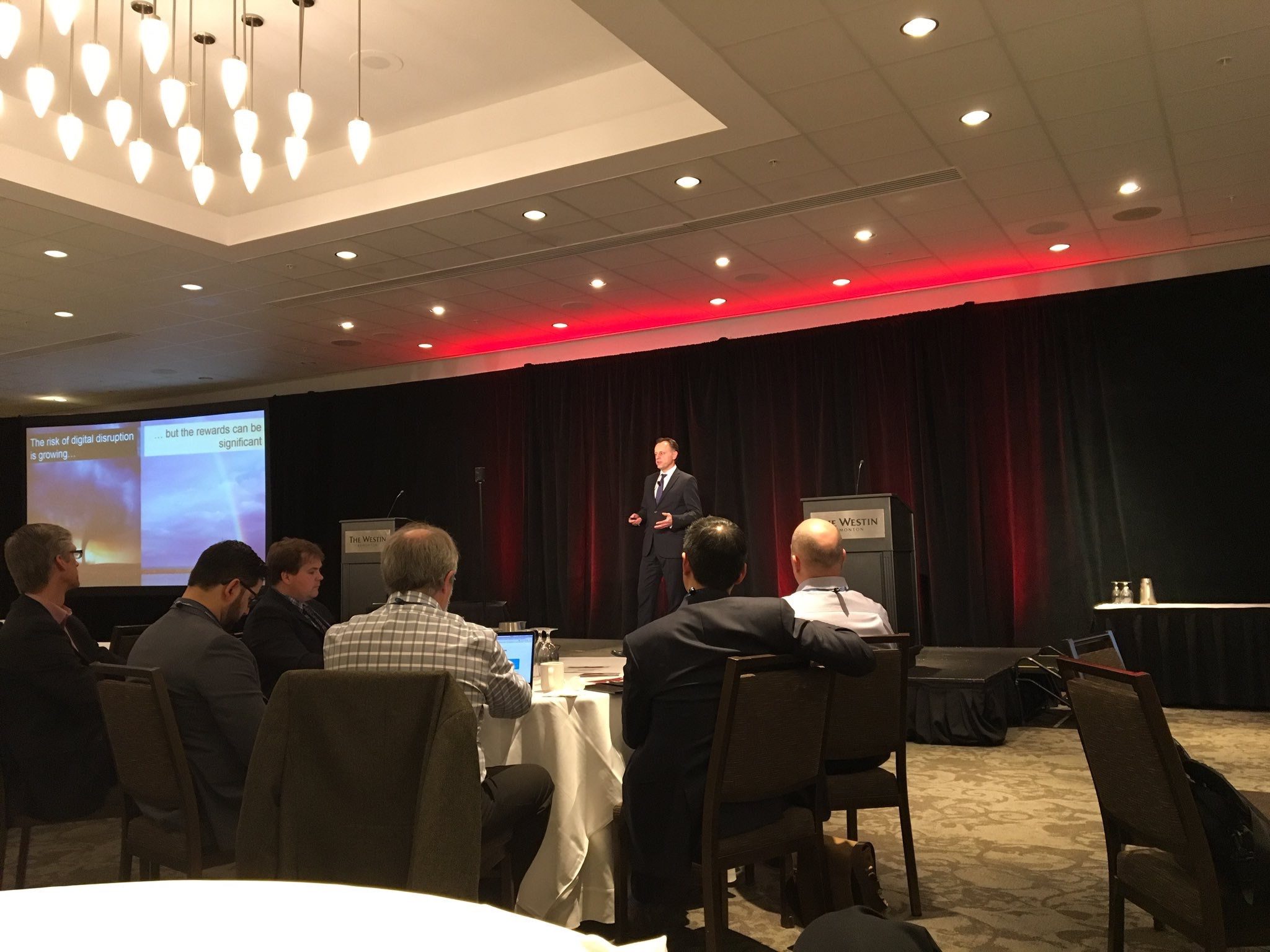By: Li-Ling Chang, Guest Contributor and CIO Peer Forum 2017 volunteer
The annual CIO Peer Forum in Edmonton had a strong attendance and captivating speakers offering much anticipated talks on creating and leading digital businesses.
The 2-day conference kicked off with keynote speaker Ian Cox, Research Director with Gartner’s CIO research team. Gartner is the world’s leading research and advisory company providing information technology related insight for IT and other business leaders located across the world. Mr. Cox is a reputable IT leader in creating, aligning and driving business and IT strategies. He is also the author of Disrupt IT. He spoke about the digital journey and the opportunity for CIOs.
Disruption
The risk of digital disruption is very real. There will be increased competition as new businesses can enter the market with new technologies built on an infrastructure entirely hosted in the cloud and can scale quickly in a matter of days. While the private sector is generally more susceptible to digital disruption, the public sector is not spared from it entirely. The public sector will face increased pressure from the public’s demands on uses of new technologies with less budget to operate on.
As scary as digital disruption may sound, there is a positive side to it. The good news is that an organization can enjoy big rewards if it does digitization well. Therefore, there is no one more important in this age of the digital world and better to lead the digital journey in an organization, than the CIO.
Steps in a Digital Journey
There are 3 steps in leading a digital journey and it’s imperative that all steps are completed:
1. Create a vision
This is not a mission statement that you simply write, post on a website and never revisit again. This is not a digital vision separate from a core business vision either. This is a vision for the whole organization in the digital world and the description of your future industry which may fundamentally change your business model. Just couple of paragraphs is enough.
If you decide to forgo this step and simply perform random acts of digitization, you may end up with duplications, conflicts, gaps and waste. The end result is that you will open yourself to disruption.
It is important to have conversations within the company before leading the journey. Here are some questions that you can ask to help you define a vision:
1. What impact are digital technologies having on your industry/markets and how will it shape the future?
2. What role will your organization play in this future?
3. What will your new business model look like?
4. What customer does the new model service?
2. Bring the vision to life
Digital markets move quickly and disruptions can happen at any time. While your vision is for the long-term, you need to bring it to life immediately. The sooner this happens the lesser the disruption to your organization. But if you let someone else bring it to life, then you are forced to play catch-up and again open yourself to disruption.
Once you have visualized the future, build out a roadmap. Embed a process that on an ongoing basis will:
– generate ideas and experiment with them
– look at what you already have: data, tools, solutions, resources, products…
– identify opportunities to use differently, extend, adapt or supplement
– build and establish prototypes, pilots, POC
– test, monitor, scale and learn
– pursue multiple ideas at the same time
3. Build digital capabilities
Different worlds need different capabilities. If you try to avoid this step, it is possible to survive short-term but hard to compete in the long-term. Companies that succeed in the digital world have the following capabilities:
1. Continuously focus on customer needs
2. Operate with speed and agility
3. Use data to drive decisions and create value
4. Willing and able to self-disrupt
5. Work collaboratively with all stakeholders
6. Build and/or work within ecosystems
7. Understand and exploit technology
The opportunity for CIOs here is to lead practically by using pilots and prototypes to build capabilities, adopting new ways of working within IT and extending to the wider organization (ie. Agile, DevOps) while raising awareness, educating and coaching other leaders.
Future of IT
As a company undergoes its digital journey, the functions of IT will go through several stages. This is what the stages may look like for a traditional business where digital currently is not a priority:
IT is an internal supplier > IT works with other functions to design and build add-on services > IT designs, builds and enables services that generate revenue > IT drives product and service design.Similarly, a day in the life of a CIO will transition from mostly internally focused: dealing with IT cost management and meeting with IT leaders, to mostly externally focused: having data-driven meetings with business leaders and external CEOs for revenue generation.
As for advice on the skills CIOs need to lead? “CIOs need to be able to articulate business problems and stories and not just talk about and lead IT transformation,” he said and ended his time on stage with this: There is no better time to be a CIO, than today.
Li-Ling Chang supported the CIO Peer Forum 2017 as a volunteer. He is a versatile front end software developer with Online Business Systems. In addition to actively researching new technologies, Li-Ling is currently building her expertise in User Experience design to help clients create seamless digital experiences throughout their internal and external services and products.
